
Beaches and Shores, Part 6
Environments (continued)
Bluffs
• Bluffs are steep cliffs found near shores.
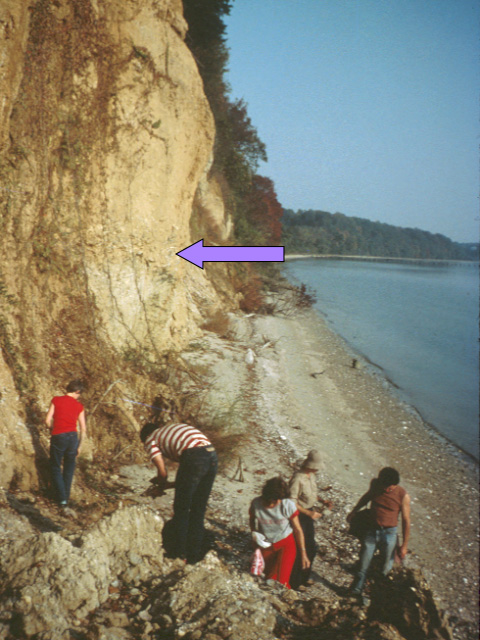
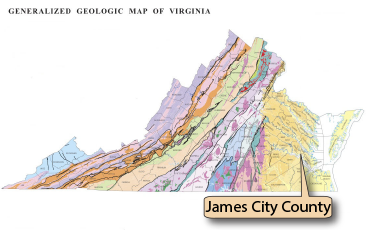 This bluff (above) is along the James River in James City County. It was formed by shoreline erosion. Note the shell bed layer near the middle of the cliff (arrow). The formation is the Yorktown Formation of early Pliocene age.(Photograph courtesy of the Virginia Division of Geology and Mineral Resources)
This bluff (above) is along the James River in James City County. It was formed by shoreline erosion. Note the shell bed layer near the middle of the cliff (arrow). The formation is the Yorktown Formation of early Pliocene age.(Photograph courtesy of the Virginia Division of Geology and Mineral Resources)
• Bluffs can deliver large quantities of sediment to beach and longshore systems.
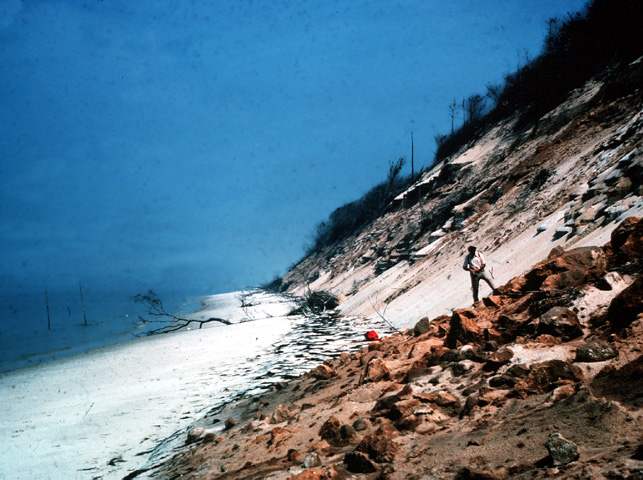
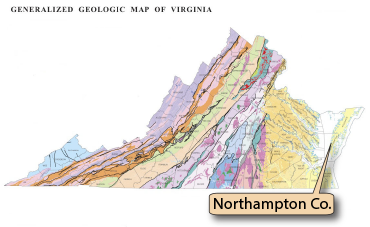 An eroding bluff (above) along the eastern shore of the Chesapeake Bay in Northampton County. The beach is being nourished by the sediments moving down the bluff. (Photograph courtesy of the Virgiia Institute of Marine Science)
An eroding bluff (above) along the eastern shore of the Chesapeake Bay in Northampton County. The beach is being nourished by the sediments moving down the bluff. (Photograph courtesy of the Virgiia Institute of Marine Science)
• Large quantities of sediment can slide down a bluff when waves cut under the base of a bluff. Then higher sediments and rocks become unstable and break free.
• Rain and wind erosion also contribute sediment from bluffs in smaller quantities.
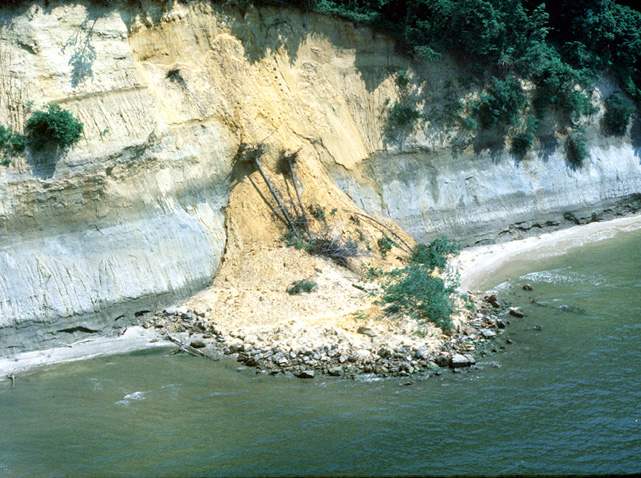
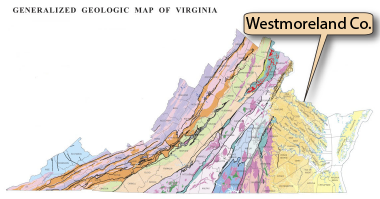 A landslide along the large bluffs of Nomini Cliffs (above) along the Potomac River in Westmoreland County. Dislodged trees and cone-shaped sediments indicate sudden, catastrophic movement.(Photograph from Hathaway and Byren (1999))
A landslide along the large bluffs of Nomini Cliffs (above) along the Potomac River in Westmoreland County. Dislodged trees and cone-shaped sediments indicate sudden, catastrophic movement.(Photograph from Hathaway and Byren (1999))